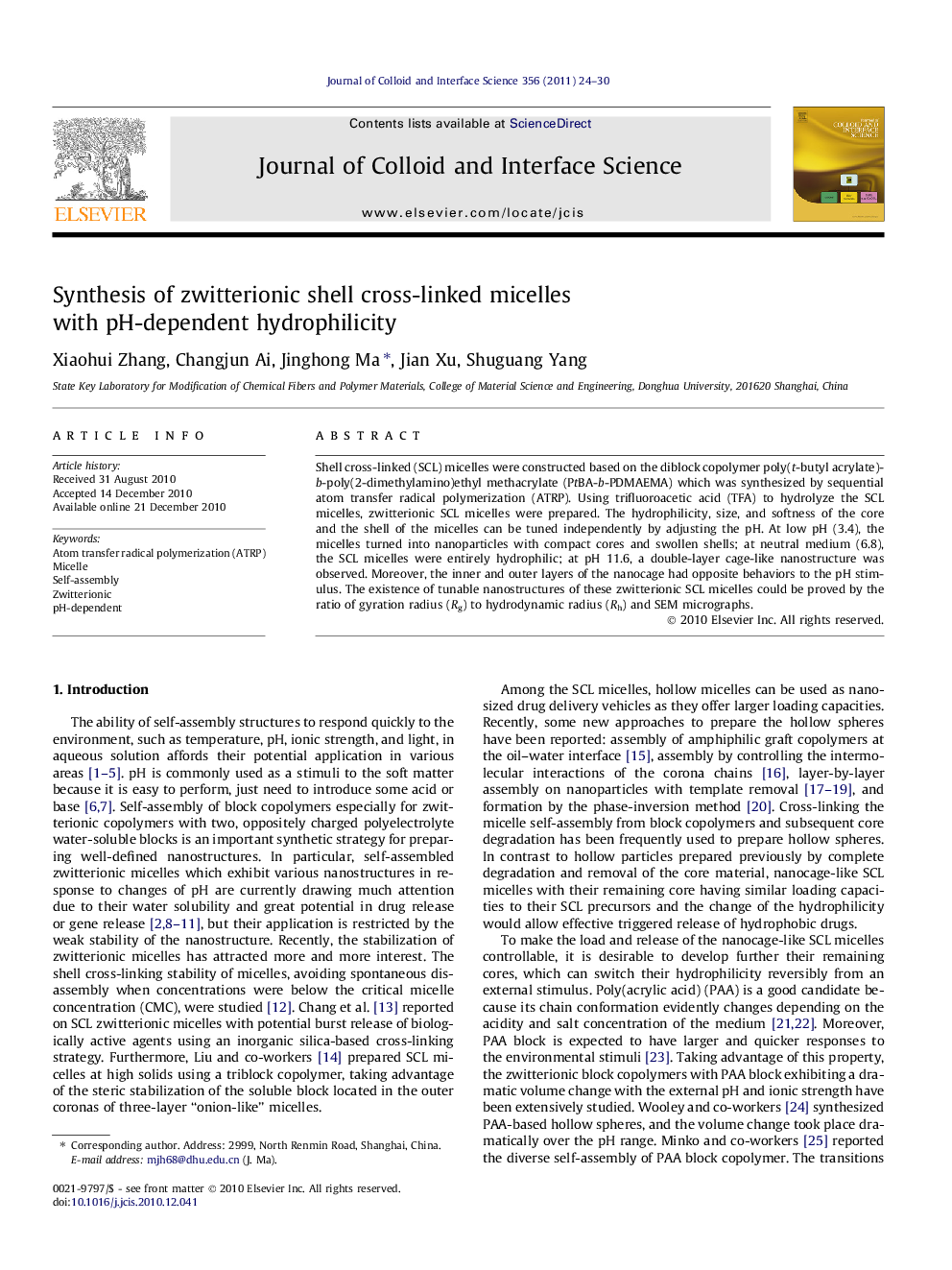| Article ID | Journal | Published Year | Pages | File Type |
|---|---|---|---|---|
| 608697 | Journal of Colloid and Interface Science | 2011 | 7 Pages |
Shell cross-linked (SCL) micelles were constructed based on the diblock copolymer poly(t-butyl acrylate)-b-poly(2-dimethylamino)ethyl methacrylate (PtBA-b-PDMAEMA) which was synthesized by sequential atom transfer radical polymerization (ATRP). Using trifluoroacetic acid (TFA) to hydrolyze the SCL micelles, zwitterionic SCL micelles were prepared. The hydrophilicity, size, and softness of the core and the shell of the micelles can be tuned independently by adjusting the pH. At low pH (3.4), the micelles turned into nanoparticles with compact cores and swollen shells; at neutral medium (6.8), the SCL micelles were entirely hydrophilic; at pH 11.6, a double-layer cage-like nanostructure was observed. Moreover, the inner and outer layers of the nanocage had opposite behaviors to the pH stimulus. The existence of tunable nanostructures of these zwitterionic SCL micelles could be proved by the ratio of gyration radius (Rg) to hydrodynamic radius (Rh) and SEM micrographs.
Graphical abstractZwitterionic shell cross-linked micelles in which core and shell have different pH-dependent behaviors were studied. The hydrophilicity of the micelles can be accurately adjusted by pH.Figure optionsDownload full-size imageDownload high-quality image (100 K)Download as PowerPoint slideResearch highlights► Zwitterionic shell cross-linked micelles have been synthesized via a novel way. ► The hydrophilicity, size, and softness of the micelles could be tuned independently by adjusting the pH. ► A double-layer nanocage-like nanostructure with pH-dependent hydrophilic core was observed.
